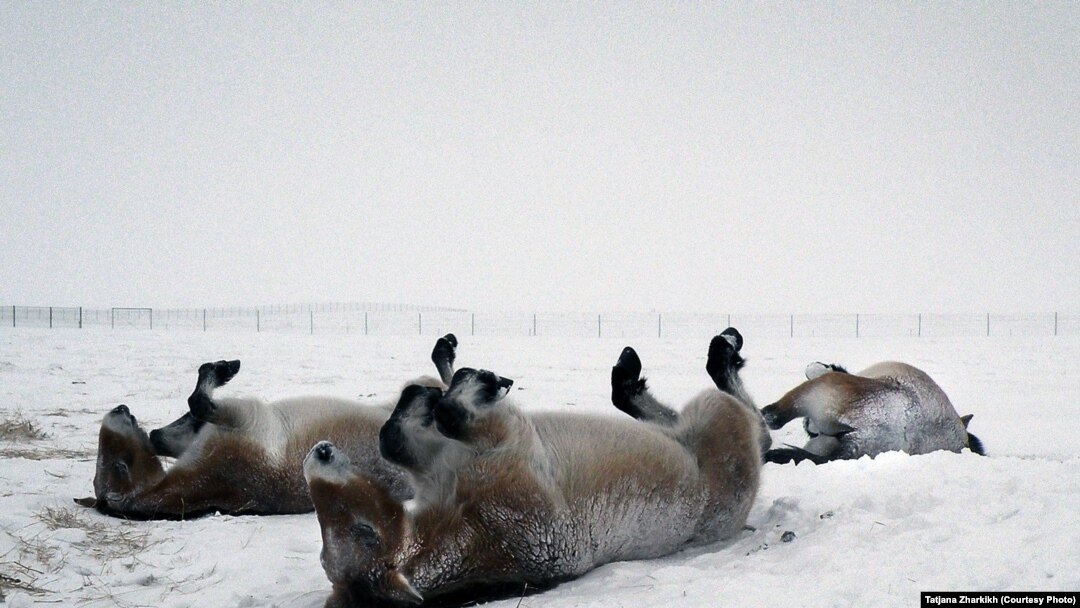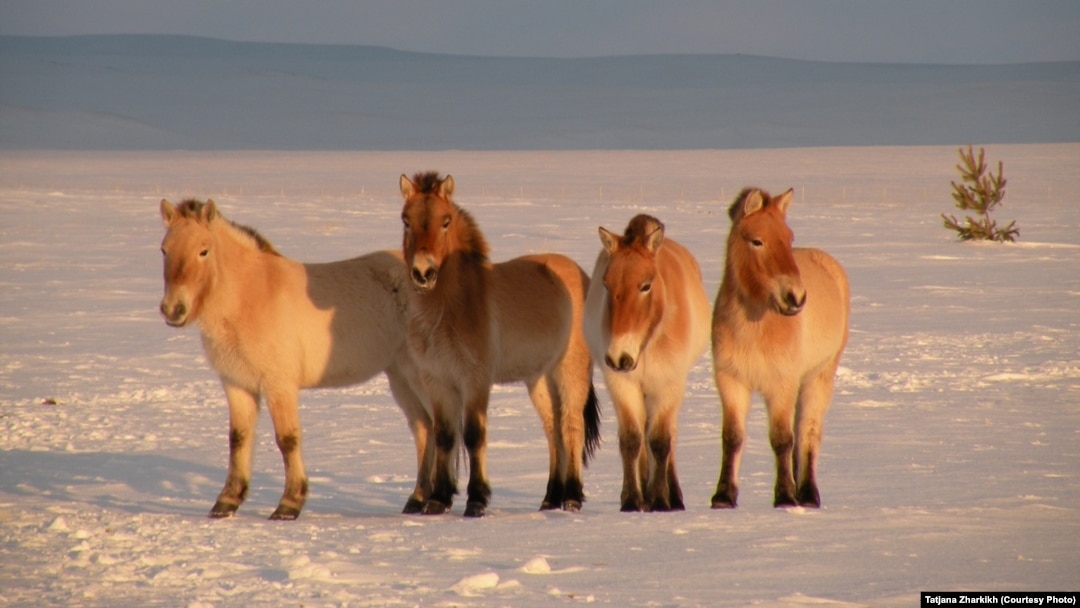Stalked for years before its existence could even be confirmed to skeptical 19th-century Europeans, then rapidly hunted, collected, or simply displaced into extinction, the wild Przewalski's horse suffered a pitiable demise in the Eurasian steppes.
Early efforts to reintroduce the tawny, thickset equine -- the only remaining wild, as opposed to feral, horse -- have been more, well, decorous.
Six Przewalski's horses arrived on a charter flight from France to Russia in October, kicking off a program to return the species to the Ural region of Orenburg, where the animal hadn't been seen in over a century.
Nearly five months later, conservationists say the animals -- one adult stallion, four mares, and an 18-month-old colt -- are adapting well to conditions on the freezing steppe.
The reintroduction project has been "very successful" in its earliest stages, according to Tatjana Zharkikh, head of the reintroduction center in the strictly protected Orenburg nature reserves along the border with Kazakhstan.

The horses rolling in the snow at a field in the Orenburg reserves, a cluster of six nature reserves near the border with Kazakhstan.
The trailblazing animals "get additional hay and oats twice a week because this winter is unusual for the Orenburg region -- a lot of snow," she says. "We're sure that the coming winters will be much warmer and much better for horses, but now we know that we and our horses are [prepared for] such conditions."
The small herd's new habitat spans more than 16,500 hectares of virgin steppe.
It is the latest scheme to bring a species that has gone from extinction in the wild and a breeding population in captivity of a mere 13 individuals back from the brink. There are now around 2,000 captive Przewalski's horses from a handful of breeding programs around the world, according to the American Museum of Natural History.
The Orenburg animals were donated by the Association for the Przewalski's Horse (TAKH) in southern France, where they roamed 600 hectares of enclosed natural grassland.
"They adapt to natural conditions," Zharkikh says. "They are not from a zoo, they are from a semi-reserve; that's why they [endure] the winter very well."
According to the International Union for Conservation of Nature (IUCN), the Przewalski's horse -- with a thick mane in winter and a characteristic dark stripe from mane to tail -- ranged from the Russian steppes to Kazakhstan, Mongolia, and northern China until the late 18th century.
After Russian explorer Nikolai Przhevalski was thought to have described the species in the late 19th century, the herds were chased down to exhaustion, pushing the Przewalski's horse into extinction in its natural habitats.
But a half-century later, with five regional breeding programs from North America to Eurasia and Australia, the species, while still endangered, is considered a conservation success.
Reintroduction efforts have been under way to return animals to the wild in Mongolia and China since the 1990s and, perhaps more remarkably, in the Ukrainian exclusion zone around Chernobyl that was the scene of the world's worst civilian nuclear disaster.
Meanwhile in Kazakhstan, wildlife officials are teaming up with German biologists to mount a project to give Przewalski's horses a chance to thrive there.
But the species remains threatened by small population size, restricted range, loss of genetic diversity, and hybridization with domesticated horses.
In order to prevent mares in the Orenburg project who venture out of their protected habitat from breeding with horses kept in nearby villages, conservationists have built a fence around the entire area.
Zharkikh says she hopes the project will receive 10 to 20 more Przewalski's horses from abroad in the coming years.
"It's not enough to [establish] a semi-free population with only six horses," she says. "It's not enough [to] avoid inbreeding."


